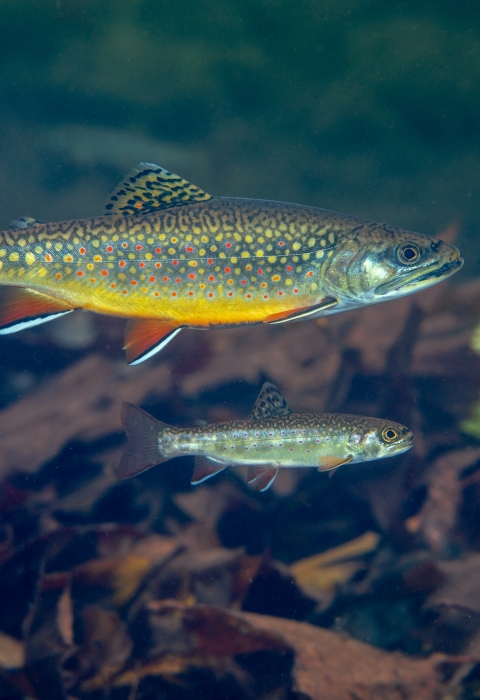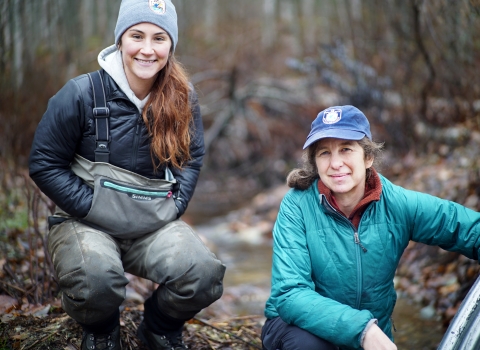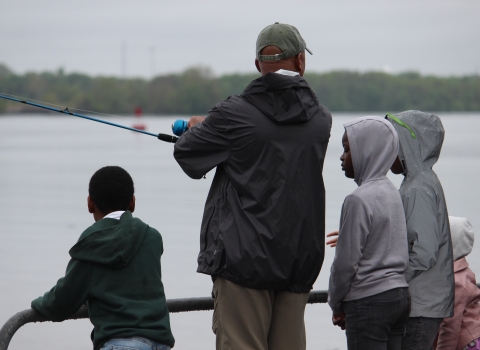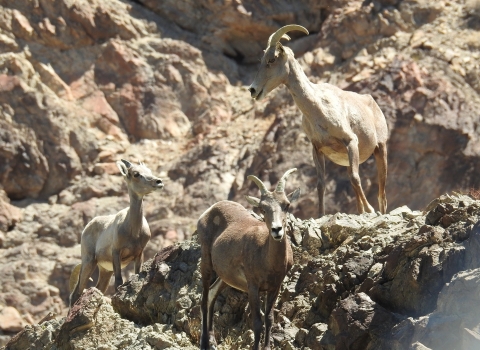$200 million dollar investment in rivers, wildlife, and communities.
Clean free-flowing waterways are vital to wildlife, people, and ecosystems. But across the country, millions of barriers fragment rivers, block fish migration, and put communities at higher risk to flooding. The Bipartisan Infrastructure Law Bipartisan Infrastructure Law
The Bipartisan Infrastructure Law (BIL) is a once-in-a-generation investment in the nation’s infrastructure and economic competitiveness. We were directly appropriated $455 million over five years in BIL funds for programs related to the President’s America the Beautiful initiative.
Learn more about Bipartisan Infrastructure Law , signed in November 2021, includes $200 million for restoring fish and wildlife passage by removing in-stream barriers and providing technical assistance under the National Fish Passage Program. The funding is distributed over five years and delivers $38 million to 40 projects in 23 states and Puerto Rico in 2022 alone, providing a once-in-a-generation opportunity to invest in our nation’s rivers, streams, and communities.
Obsolete or poorly designed dams, culverts, stream crossings, and levees keep fish, and other aquatic species from moving freely to feed, migrate, and reproduce. These challenges put fish populations at risk, undermine the health of the rivers, and reduce fishing opportunities. These barriers also fragment aquatic habitats and are often more susceptible to flooding or drought.
Across the country National Fish Passage Program projects funded by the Bipartisan Infrastructure Law will help restore rivers, protect wildlife, support communities, and improve climate resilience.
The Potomac Headwaters Fish Passage Restoration will implement up to 17 fish passage fish passage
Fish passage is the ability of fish or other aquatic species to move freely throughout their life to find food, reproduce, and complete their natural migration cycles. Millions of barriers to fish passage across the country are fragmenting habitat and leading to species declines. The U.S. Fish and Wildlife Service's National Fish Passage Program is working to reconnect watersheds to benefit both wildlife and people.
Learn more about fish passage barrier removal projects, including dam removals and road-stream crossing replacements, to reconnect over 195 miles of habitat for brook trout and American eel in the headwaters of the Potomac Watershed across three states (West Virginia, Virginia and Maryland). This project is part of the Potomac Headwaters River restoration effort where other partners have been collectively working for over 15 years to reconnect high quality, limestone underlain spring fed, brook trout patches.
In Arizona the Apache Trout Recovery Fish Passage Infrastructure project will remove barriers on several creeks and replace culverts, most of which are on Tribal land. The project will help create larger populations of Apache trout in addition to re-opening access to 52.4 miles of habitat.
Across coastal Florida, Dam Removal and Stream Restoration in Florida projects will remove two dams and restore streams on the Apalachicola, Myakka, and Econlockhatchee Rivers. The projects will benefit five federally listed mussel species as well as Gulf sturgeon and Florida manatee.
The Tyonek Creek Culvert Replacement for the Benefit of Subsistence Resources project will restore access to 10.8 miles of coho salmon spawning and rearing habitat by replacing an undersized culvert on one of the largest and most important salmon streams near the village of Tyonek, Alaska.
In the Pacific Northwest the West Fork Grays River Fish Passage project will work with the Cowlitz Indian Tribe to remove derelict water intake infrastructure. The intake removal will restore fish passage to over 15 miles of upstream spawning and rearing habitat, benefiting threatened populations of winter steelhead, coho, fall Chinook and chum salmon.
The National Fish Passage Program combines technical expertise with a track record of success.
Implemented primarily through the Service's Fish and Wildlife Conservation Offices, the National Fish Passage Program provides financial and technical assistance to partners across the country. Since 1999, the program has worked with over 2,000 local communities, Tribes, and private landowners to remove or bypass over 3,400 barriers to fish passage and reopen access to over 61,000 miles of upstream habitat for fish and other animals. Staff have expertise in fish migration and biology as well as financial, engineering, and planning assistance to communities, Tribes, and landowners to help them remove barriers and restore rivers for the benefit both fish and people.
The rivers, streams, and coastal systems of North America once supported vast annual runs of fish such as Pacific salmon, American shad, blueback herring, Pacific lamprey and American eel. These species and many others, including some at-risk and listed species, depend on connected streams and high-quality habitat to survive. The U.S. Fish and Wildlife Service and the National Fish Passage Program are committed to reconnecting rivers for the benefit of all.
FY22 National Fish Passage projects with funding from Bipartisan Infrastructure Law.
Project Name | Location | Funding |
AK, Hoonah-Angoon Census Area | $600,000 | |
AK, Valdez-Cordova Borough | $1,318,604 | |
AK, Kenai Peninsula Borough | $1,614,106 | |
AL, St. Clair | $1,125,000 | |
AZ, Navajo / Apache | $2,310,000 | |
AZ, Graham | $240,000 | |
FL, Gadsden/Sarasota/Volusia | $600,000 | |
ID, Caribou | $60,000 | |
IN, Grant | $325,000 | |
IN, Vigo | $109,500 | |
MA, Plymouth | $1,550,000 | |
ME, Androscoggin | $350,000 | |
MI, Genessee | $855,650 | |
MI, Jackson | $800,000 | |
Increasing Bull Trout and Arctic Grayling Fish Passage in Montana | MT, Powell/Lewis & Clark/Beaverhead | $250,000 |
Upper Clark Fork Fish Passage for Bull Trout and Westslope Cutthroat | MT, Ravalli and Deer Lodge | $230,000 |
NM, Catron | $430,740 | |
Carson National Forest Valle Vidal Culvert Replacement Project | NM, Taos | $151,120 |
NV, Washoe | $8,292,215 | |
OR, Tillamook | $150,000 | |
OR, Tillamook | $500,000 | |
OR, Tillamook | $100,000 | |
PA, Philadelphia/ Delaware | $900,000 | |
PR, Aguada/Aguadilla | $1,500,000 | |
SC, Lancaster/Greenwood | $860,000 | |
TN, Lincoln | $500,000 | |
TX, Kendall | $130,000 | |
TX, Kinney | $480,000 | |
UT, Carbon | $1,500,000 | |
UT, Washington | $3,520,000 | |
VA, Tazewell | $200,000 | |
WA, Clallam | $992,000 | |
WA, Okanogan | $600,000 | |
Schafer Boom Road Camp Creek Fish Passage Barrier Corrections | WA, Grays Harbor | $75,900 |
WA, Yakima | $400,000 | |
WA, Pacific | $99,800 | |
WA, Clallam | $551,000 | |
WV, Preston | $1,000,000 | |
WV, VA, MD | $1,150,000 | |
Upper Bear River Fish Passage for Native Bear River Cutthroat | WY/UT, Uinta/Rich | $1,390,000 |






